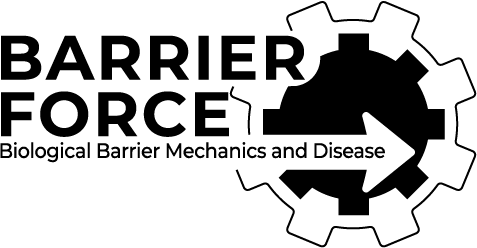Morphogenesis and cell state transitions must be coordinated in time and space to produce a functional tissue. An excellent paradigm to understand the coupling of these processes is mammalian hair follicle development, which is initiated by the formation of an epithelial invagination—termed placode—that coincides with the emergence of a designated…
CoE-publications
Lymphangiogenesis requires Ang2/Tie/PI3K signaling for VEGFR3 cell-surface expression
Vascular endothelial growth factor C (VEGF-C) induces lymphangiogenesis via VEGF receptor 3 (VEGFR3), which is encoded by the most frequently mutated gene in human primary lymphedema. Angiopoietins (Angs) and their Tie receptors regulate lymphatic vessel development, and mutations of the ANGPT2 gene were recently found in human primary lymphedema. However,…
Activated I-BAR IRSp53 clustering controls theformation of VASP-actin–based membraneprotrusions
Filopodia are actin-rich membrane protrusions essential for cell morphogenesis, motility, and cancer invasion. How cells control filopodium initiation on the plasma membrane remains elusive. We performed experiments in cellulo, in vitro, and in silico to unravel the mechanism of filopodium initiation driven by the membrane curvature sensor IRSp53 (insulin receptor…
Psychedelics promote plasticity by directlybinding to BDNF receptor TrkB
Psychedelics produce fast and persistent antidepressant effects and induce neuroplasticity resembling the effects of clinically approved antidepressants. We recently reported that pharmacologically diverse antidepressants, including fluoxetine and ketamine, act by binding to TrkB, the receptor for BDNF. Here we show that lysergic acid diethylamide (LSD) and psilocin directly bind to…
Actin-rich lamellipodia-like protrusions contribute to the integrity of epithelial cell–cell junctions
Metastasis-suppressor 1 (MTSS1) is a membrane-interacting scaffolding protein that regulates the integrity of epithelial cell–cell junctions and functions as a tumor suppressor in a wide range of carcinomas. MTSS1 binds phosphoinositide-rich membranes through its I-BAR domain and is capable of sensing and generating negative membrane curvature in vitro. However, the mechanisms…
Sonochemical Formation of FluorouracilNanoparticles:Toward Controlled Drug Deliveryfrom Polymeric Surfaces
Background: The use of nanotechnology in the production of medical equipment has opened new possibilities to fight bacterial biofilm developing on their surfaces, which can cause infectious complications. In this study, we decided to use gentamicin nanoparticles. An ultrasonic technique was used for their synthesis and immediate deposition onto the…
Polarity signaling balances epithelialcontractility and mechanical resistance
Epithelia maintain a functional barrier during tissue turnover while facing varying mechanical stress. This maintenance requires both dynamic cell rearrangements driven by actomyosin-linked intercellular adherens junctions and ability to adapt to and resist extrinsic mechanical forces enabled by keratin filament-linked desmosomes. How these two systems crosstalk to coordinate cellular movement…
Surfactant Proteins SP-B and SP-C inPulmonary Surfactant Monolayers:PhysicalProperties Controlled by Specific Protein-LipidInteractions
The lining of the alveoli is covered by pulmonary surfactant, a complex mixture of surface-active lipids and proteins that enables efficient gas exchange between inhaled air and the circulation. Despite decades of advancements in the study of the pulmonary surfactant, the molecular scale behavior of the surfactant and the inherent…
Structural basis underlying specific biochemicalactivities of non-muscle tropomyosin isoforms
The actin cytoskeleton is critical for cell migration, morphogenesis, endocytosis, organelle dynamics, and cytokinesis. To support diverse cellular processes, actin filaments form a variety of structures with specific architectures and dynamic properties. Key proteins specifying actin filaments are tropomyosins. Non-muscle cells express several functionally non-redundant tropomyosin isoforms, which differentially control…
